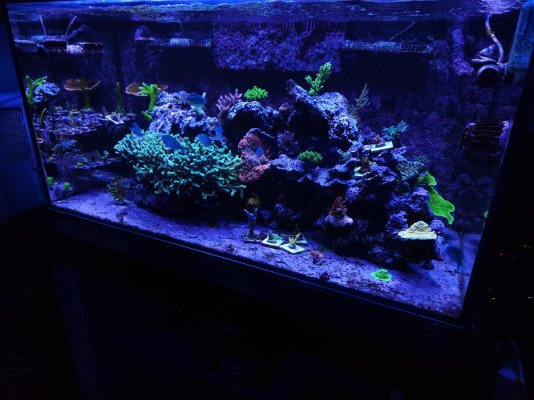Over the past week my pH has started running 8.3-8.55. usually runs 8.19-8.34.
Calibrated probe and double checked with hanna pH so I don't think its a faulty reading.
Everything in the tank seems to be doing well. only change recently is lower temps where I live but house is kept pretty constant.
have 200 volume mixed reef. Dosing BRS soda ash ~80mls/day BRS cal~70mls/ day. Alk is 8.2 and Ca is 482
Run a pax bellum with offset lighting schedule. Turned the pax bellum off for a few days but didn't see a drop in pH.
Skimmer on 24/7 without a scrubber and draws air form my living room.
Not too concerned now but want a plan in case I start to see changes in the tank or if it creeps higher. I read other posts that say high pH is never a problem uness dosing high pH solutions but would soda ash count in this category?
Has anyone dosed CO2 like the fluval kits for planted freshwater tanks?
Would an aerating the sump more help?
Calibrated probe and double checked with hanna pH so I don't think its a faulty reading.
Everything in the tank seems to be doing well. only change recently is lower temps where I live but house is kept pretty constant.
have 200 volume mixed reef. Dosing BRS soda ash ~80mls/day BRS cal~70mls/ day. Alk is 8.2 and Ca is 482
Run a pax bellum with offset lighting schedule. Turned the pax bellum off for a few days but didn't see a drop in pH.
Skimmer on 24/7 without a scrubber and draws air form my living room.
Not too concerned now but want a plan in case I start to see changes in the tank or if it creeps higher. I read other posts that say high pH is never a problem uness dosing high pH solutions but would soda ash count in this category?
Has anyone dosed CO2 like the fluval kits for planted freshwater tanks?
Would an aerating the sump more help?























